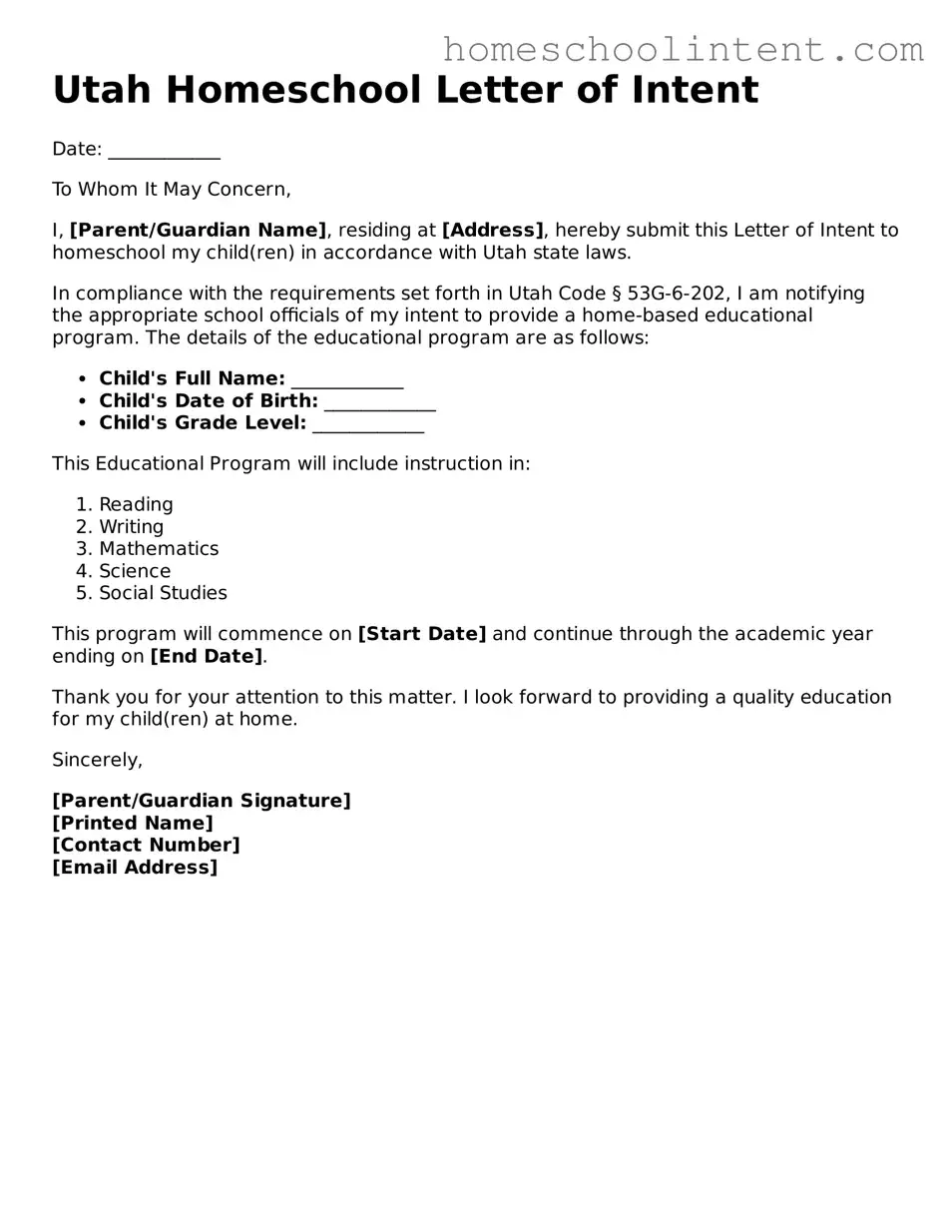Documents used along the form
When embarking on the journey of homeschooling in Utah, families often find themselves navigating a variety of forms and documents in addition to the essential Homeschool Letter of Intent. Each of these documents serves a specific purpose and plays a crucial role in ensuring a smooth and compliant homeschooling experience. Below are some key forms that may accompany the Letter of Intent.
- Curriculum Plan: This document outlines the educational materials and subjects that will be covered throughout the school year. It serves as a roadmap for the student’s learning journey, ensuring that all necessary subjects are addressed.
- Attendance Records: Keeping track of daily attendance is vital for compliance with state regulations. These records help demonstrate that the student is engaged in educational activities throughout the year.
- Assessment Records: Many states require periodic assessments to gauge a student's progress. This document may include standardized test scores or evaluations from qualified educators, showcasing the student’s academic growth.
- Educational Philosophy Statement: This brief narrative allows parents to articulate their approach to education. It can provide insight into the family's values, teaching methods, and the overall goals for the homeschooling experience.
- Portfolio of Student Work: A collection of the student's completed assignments, projects, and other work can be compiled throughout the year. This portfolio serves as tangible evidence of learning and can be useful for assessments or evaluations.
- Withdrawal Form from Public School: If a child is transitioning from public school to homeschooling, a formal withdrawal form may be necessary. This document ensures that the child is officially removed from the public school system.
These documents, while not exhaustive, provide a solid foundation for families embarking on their homeschooling journey in Utah. By preparing and maintaining these records, parents can create an organized and effective educational environment that meets both their children's needs and state requirements.
